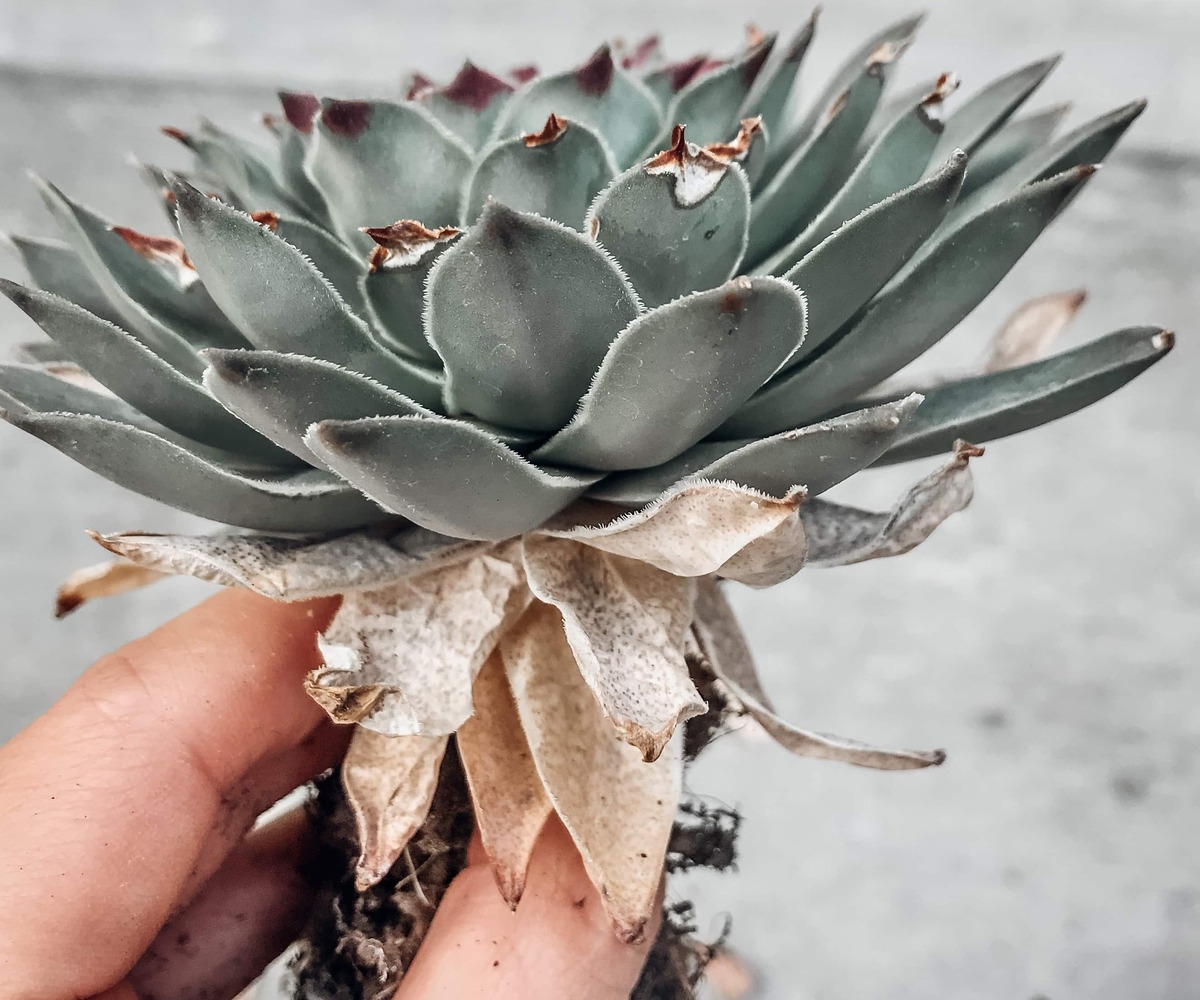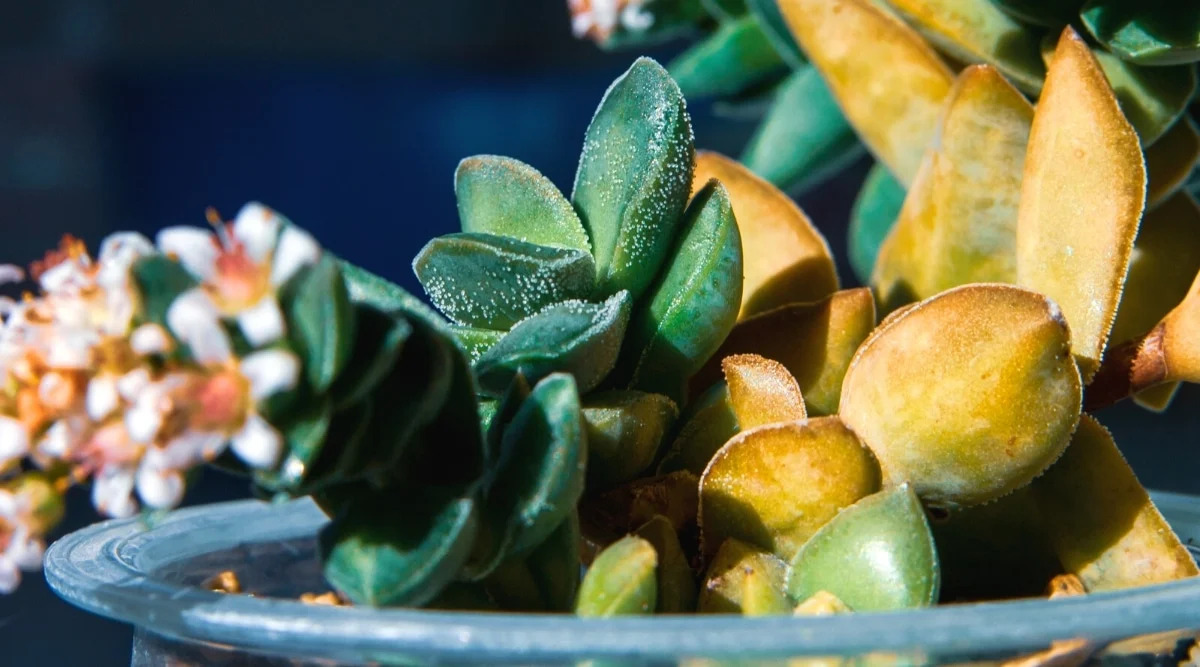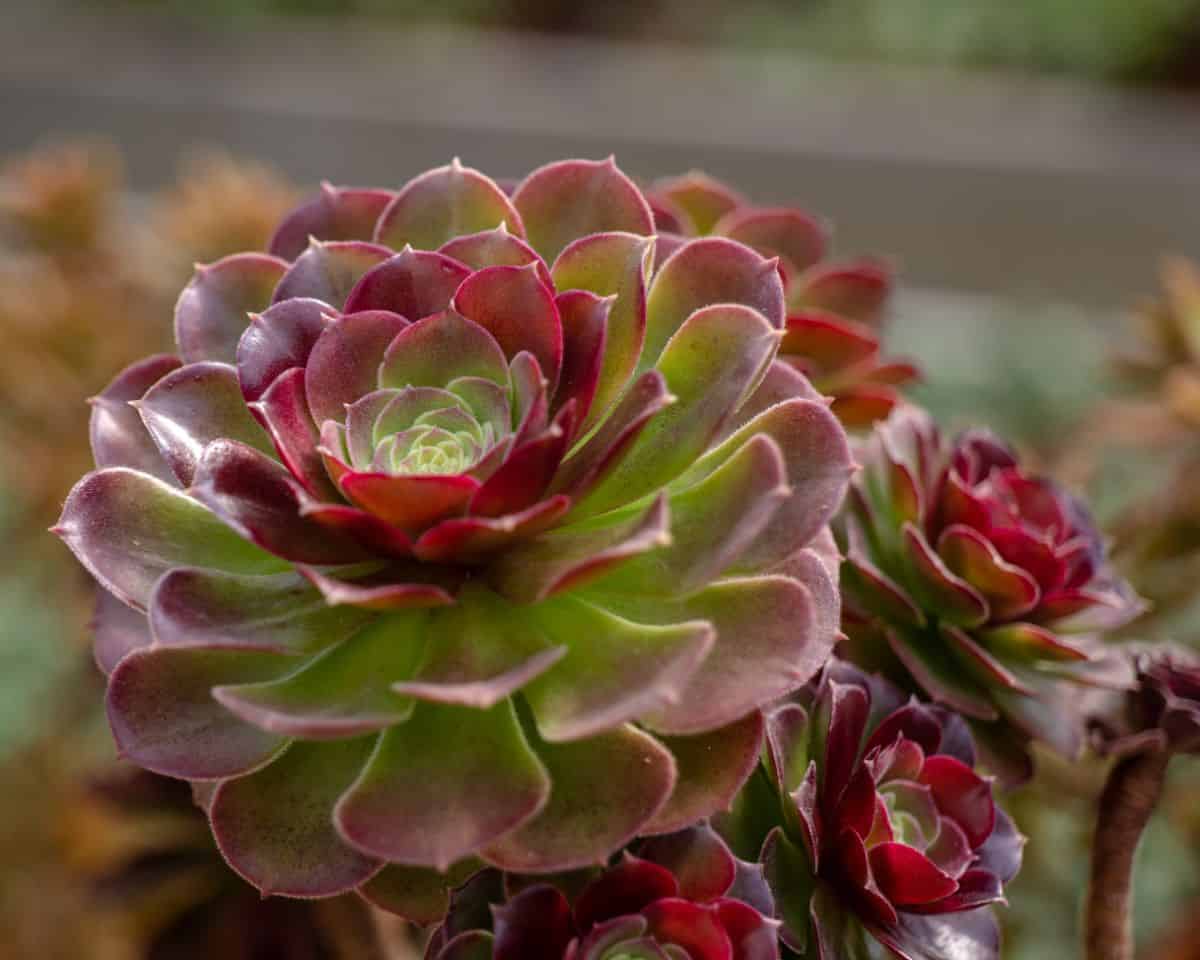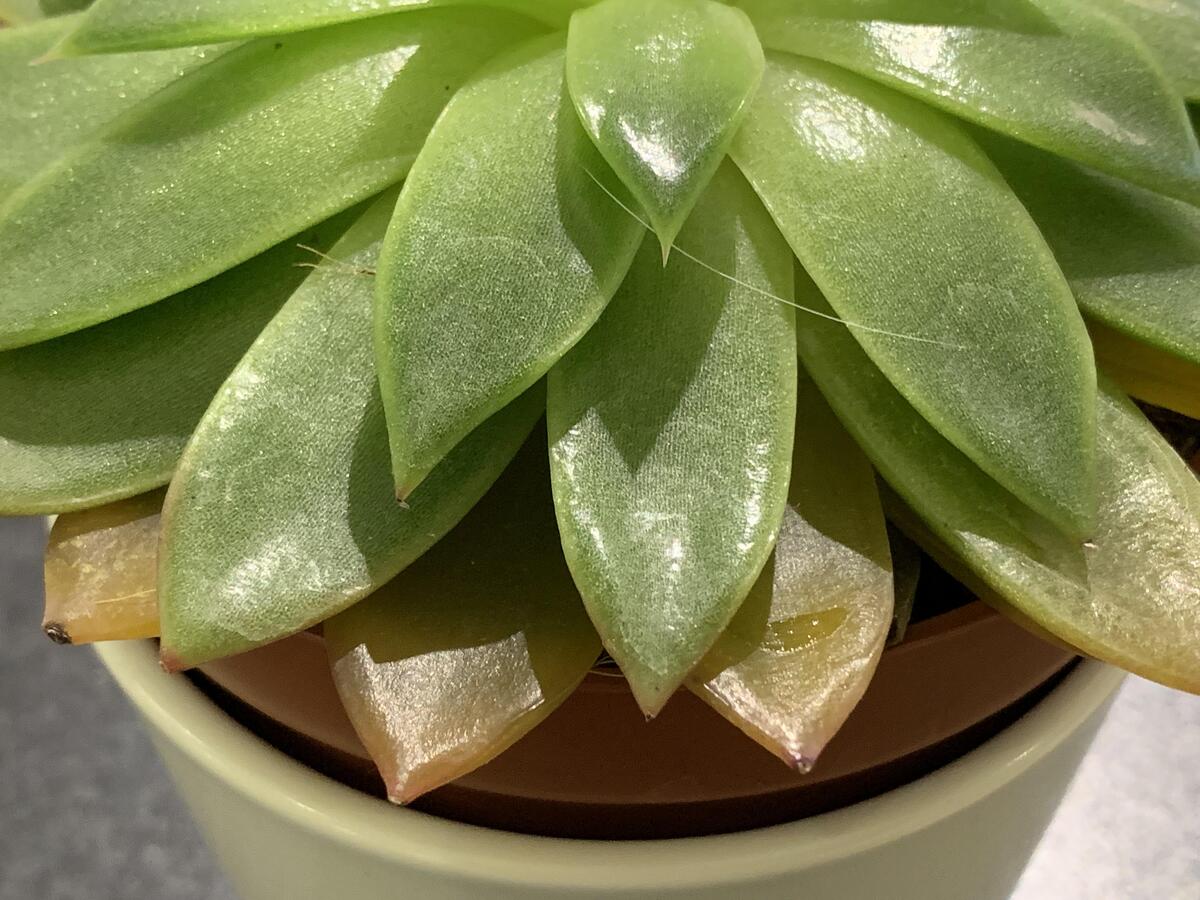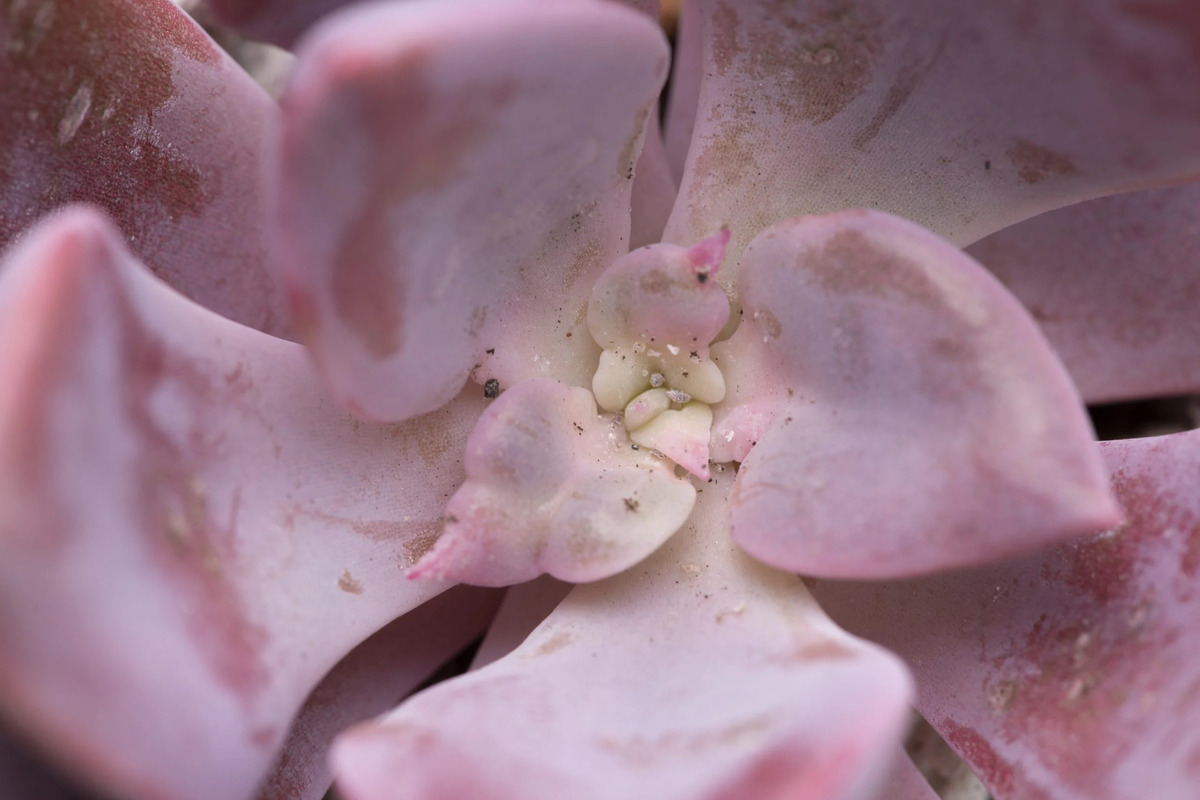Home>Types of Gardening>Ornamental Gardening>Why Put Rocks On Top Of Succulents


Ornamental Gardening
Why Put Rocks On Top Of Succulents
Published: December 29, 2023
Discover the benefits of placing rocks on top of succulents in your ornamental gardening. Find out how it enhances drainage and adds a decorative touch to your plants.
(Many of the links in this article redirect to a specific reviewed product. Your purchase of these products through affiliate links helps to generate commission for Chicagolandgardening.com, at no extra cost. Learn more)
Table of Contents
Introduction
Welcome to the wonderful world of ornamental gardening! If you’re a gardening enthusiast or simply looking to add some beauty and charm to your outdoor space, ornamental gardening is the perfect avenue to explore. Ornamental gardening focuses on the cultivation and arrangement of plants for their aesthetic value rather than solely for practical purposes like food production. It’s all about creating visually stunning landscapes that evoke a sense of serenity and delight. One key aspect of ornamental gardening is the careful selection and placement of plants and accessories, such as rocks, to enhance the overall beauty and appeal of the garden.
In this article, we will delve into the practice of using rocks as top dressing for succulents in ornamental gardening. Succulents, with their unique forms and water-storing abilities, have gained immense popularity in recent years. Adding rocks on top of succulents not only serves as an attractive decorative element but also offers several benefits for the plants themselves. However, as with any gardening technique, there are also potential drawbacks and alternative options to consider. We will explore all of these aspects to help you make informed decisions and create stunning ornamental gardens with succulents.
Benefits of Putting Rocks on Top of Succulents
Using rocks as top dressing for succulents can provide a range of benefits for both the plants and the overall aesthetics of your ornamental garden. Let’s explore some of the main advantages:
- Improved Drainage: Succulents, known for their ability to store water in their leaves, require well-draining soil to prevent root rot. By placing rocks on top of the soil, you can create a natural barrier that encourages water to flow away from the roots, preventing excessive moisture accumulation.
- Reduced Erosion: Succulents are often grown in shallow containers or rock gardens that may be prone to erosion. Rocks placed on top of the soil act as a protective layer, preventing the soil from washing away during heavy rains or watering sessions. This helps to maintain the stability of the planting area and keep the succulents securely in place.
- Enhanced Aesthetics: Adding rocks as top dressing can significantly enhance the visual appeal of your succulent arrangements. The different colors, sizes, and textures of the rocks complement the unique forms and colors of the succulents, creating a captivating and harmonious display. Whether you opt for smooth pebbles, rugged stones, or colorful gravel, the rocks add depth and dimension to the overall composition.
- Protection from Soil Splashing: When watering succulents, soil particles can get splashed onto the leaves, leaving unsightly marks or even causing damage. Placing rocks on top of the soil acts as a protective layer, preventing soil splashing and keeping the leaves clean and healthy.
- Weed Suppression: Weeds can be a nuisance in any garden, competing with your succulents for nutrients, water, and space. By covering the soil with rocks, you create a barrier that impedes the growth of weeds, reducing the need for frequent weeding and minimizing the risk of weed-related issues.
By incorporating rocks as top dressing for your succulents, you not only reap these benefits but also create visually stunning arrangements that are sure to impress. So go ahead, let your creativity shine and experiment with different rock types to elevate the beauty of your ornamental garden.
Tips for Using Rocks as Top Dressing for Succulents
While using rocks as top dressing for succulents is a simple and effective technique, a few tips and considerations can help you achieve the best results. Here are some handy tips to keep in mind:
- Select the Right Rocks: Choose rocks that are compatible with the overall aesthetic of your succulent garden. Consider factors such as color, size, and texture to create a visually pleasing composition. Opt for rocks that are smooth and well-rounded to avoid any sharp edges that could potentially harm your succulents.
- Ensure Adequate Drainage: Before adding rocks, ensure that the succulent’s pot or planting area has proper drainage. Place a layer of gravel or small stones at the bottom of the container to help with water drainage, preventing water from stagnating around the roots.
- Apply Rocks Carefully: Gently place the rocks on top of the soil, avoiding damage to the succulent’s leaves or stems. Make sure the rocks are evenly distributed without covering the base of the plant. This allows for proper air circulation and prevents moisture from getting trapped near the stem, reducing the risk of rot.
- Consider Porous Rocks: Porous rocks, such as lava rocks or pumice, can further enhance drainage and provide additional aeration to the soil. These rocks also have the advantage of retaining some moisture, which can be beneficial in certain climates or during dry spells.
- Monitor Moisture Levels: While rocks can help with drainage, it’s important to monitor the moisture levels in the soil to ensure your succulents are not being over or under watered. Test the soil regularly by inserting your finger or a moisture meter to determine if watering is necessary.
- Handle Weeds: While rocks can help suppress weeds, some may still find their way through. Remove any weeds that emerge, ensuring they are fully uprooted to prevent them from competing with your succulents for resources.
- Adjust as Needed: Over time, the rocks may shift or sink into the soil. Periodically check and adjust the placement of the rocks to maintain the desired look and functionality of your succulent arrangements.
By following these tips, you can effectively use rocks as top dressing for your succulents, creating a visually appealing and well-maintained garden space. Experiment with different rock combinations to find the perfect match that complements your succulents and adds a touch of natural beauty to your ornamental garden.
Potential Drawbacks of Using Rocks on Top of Succulents
While using rocks as top dressing for succulents offers various benefits, it’s important to be aware of the potential drawbacks associated with this practice. Consider the following factors:
- Moisture Level Mismanagement: Rocks can hinder water penetration into the soil, affecting the ability of succulents to absorb moisture. If the rocks create a barrier that prevents water from reaching the roots, it can lead to dehydration and stress for the plants. It is crucial to monitor the moisture levels and adjust watering accordingly to prevent underwatering.
- Overheating: Rocks, especially dark-colored ones, can absorb and retain heat. If the rocks become excessively hot, they can potentially raise the temperature of the soil, causing stress to the succulents. This is particularly important to consider in regions with intense sunlight and high temperatures. To prevent overheating, choose lighter-colored rocks or consider alternative top dressing materials.
- Root Restrictions: Succulents have a shallow root system, and the presence of thick layers of rocks can restrict root growth and spread. If the rocks are too deep or tightly packed, they can hinder the expansion of the root system, potentially limiting the overall health and growth of the plants.
- Pest Habitat: The use of rocks as top dressing can create small gaps and spaces that may serve as hiding places for pests, such as snails or slugs. These pests can damage or feed on the succulents, causing harm to your plants. Regular inspection and removal of any pests is essential to prevent infestation.
- Difficulty in Repotting: When it comes time to repot or propagate your succulents, the presence of rocks as top dressing can make the process more challenging. It may be necessary to carefully remove the rocks before repotting, which can be time-consuming and potentially disrupt the arrangement.
By being aware of these potential drawbacks, you can take appropriate measures to mitigate their impact and ensure the health and vitality of your succulents. Regular observation, adjustment of watering practices, and periodic removal of debris can help maintain a balance between the benefits and drawbacks associated with using rocks as top dressing for your succulents.
Alternatives to Using Rocks as Top Dressing for Succulents
If you prefer not to use rocks as top dressing for your succulents or if you want to explore other options, there are several alternatives that can achieve similar effects in your ornamental garden. Consider the following alternatives:
- Decorative Sand: Sand can be an excellent alternative to rocks as top dressing. Choose a fine-grained sand in a color that complements your succulents. The sand not only enhances the aesthetics but also aids in drainage and moisture regulation.
- Gravel: Instead of using larger rocks, consider using small-sized gravel as top dressing. Gravel provides similar benefits to rocks, such as improved drainage and weed suppression, while offering a different texture and appearance. It comes in various colors and sizes, allowing you to customize the look of your succulent arrangements.
- Coconut Coir: Coconut coir, derived from the husks of coconuts, is an organic material that can be used as a top dressing for succulents. It retains moisture, provides good drainage, and helps in weed suppression. Coconut coir also decomposes over time, adding nutrients to the soil.
- Moss: Moss can be used as a natural and visually appealing alternative to rocks as top dressing. It helps retain moisture, provides insulation, and creates a lush, green look. Make sure to use moss that is appropriate for your particular succulent species and growing conditions.
- Decorative Mulch: Decorative mulch, such as bark chips or wood shavings, can be used as a top dressing to enhance the aesthetics of your succulent display. Mulch helps retain moisture, regulates soil temperature, and suppresses weed growth. Just ensure that the mulch does not get lodged in the leaves or stems of the succulents.
Remember, the choice of alternative top dressing materials will depend on your specific design preferences, the needs of your succulents, and the overall style of your ornamental garden. Experiment with different options, mix and match them, and find the one that best suits your vision and the well-being of your succulents.
Conclusion
Incorporating rocks as top dressing for succulents can enhance the beauty of your ornamental garden while providing practical benefits like improved drainage, reduced erosion, and weed suppression. However, it’s important to consider the potential drawbacks, such as moisture level mismanagement and root restrictions, and to explore alternative options that suit your preferences and the needs of your succulents.
Whether you choose rocks, decorative sand, gravel, coconut coir, moss, or decorative mulch as top dressing, the key is to create a visually pleasing arrangement that maintains the health and vitality of your succulents. Remember to select the right materials, monitor moisture levels, and adjust watering practices accordingly. Keep an eye out for pests and regularly inspect and adjust the arrangement as needed.
As you embark on your ornamental gardening journey, consider experimenting with various combinations and styles. Let your creativity flow and enjoy the process of designing and caring for your succulent arrangements. With careful attention to detail and a touch of personal flair, your ornamental garden will become a haven of beauty and tranquility.
